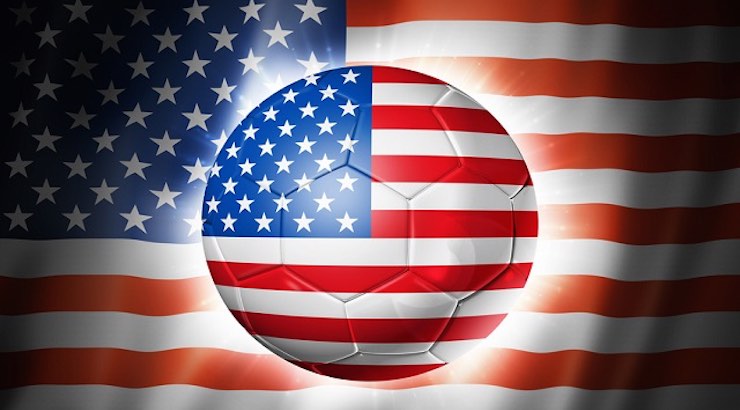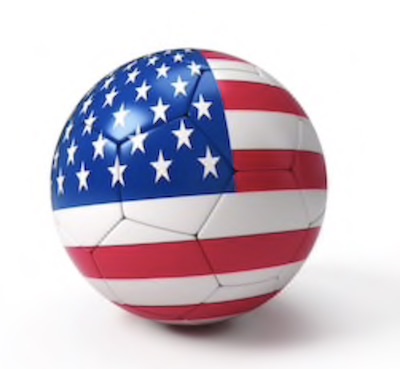Making American Soccer Better: Would an Age Cap Help Create a Player Pathway in the USL?
The 2019 USL League One kicks off its inaugural 28–game schedule, beginning March 29 and concluding October 5, followed by playoffs the weekend of October 11–13 and the final match on the following weekend. The USL Championship’s season just started on March 8 and runs through October 19 followed by the championship run.
The USL has expanded this year to meet the needs of developing players and its member clubs … but the question still remains, are we really doing enough to create a viable pathway for the top players in the U.S. Soccer Development Academy and establish a bridge to America’s professional soccer world?
Is this working? Can we do a better job of creating a stronger environment for success?
HOW IS THE USA BUILDING FUTURE PLAYERS?
When the U.S. Soccer Men’s National Team failed to qualify for the 2018 FIFA World Cup and we all started the blame game.
We are used to being a team that can come from behind and grab a victory.
Although America was absent from the FIFA World Cup for the first time after a run of seven straight appearances on the most glorious of all football showcases, what worried people most was what is comin next and are we really doing enough to ensure future success?
Why did we fail for the first time since 1986? And how have we adjusted our structure to improve the odds?
The U.S. Soccer Development Academy, aptly named, was started to actually develop the elite youth soccer players in this country. The system of play and the technical level of talent from U18 and younger was comparable to teams all over the world.
Known as the DA, the boys side has produced homegrown players – but is the structure of American professional soccer able to help them get to the next level?
We have accomplished a lot in a few years. In competition at different ages under 18, the US players often hold their own; yet there seems to be a pattern that after ‘graduating’ from the Development Academy, we are not able to compete on the world stage of soccer.
What happens to soccer development in this country after the age of 19?
Before I answer the questions, I’m going to let you know that I’m not going to give any examples of teams, I’m not going to compare and contrast academies or MLS teams or USL or college teams. I’m not naming names or naming blame.
Truthfully, everyone’s a little sensitive to the subject right. My goal here is to take an overview of the situation and offer a solution.
Most elite players in the United States at the age of 18 attend university, they play in the NCAA, or as its known, Division I (D1) soccer.
The glaring problem here is that the college season is barely three months long.
Teams get together in August for preseason training and games, often practicing twice a day, if not more. The season consists of bi-weekly or tri-weekly games that culminate in playoffs. By December, the season is over.
This system is extremely ripe for injury and quick burn out. It is obvioius that injuries are more likely to happen playing two games per week. They often play three. From unlimited subbing on and off the field, to the crunch of games — college soccer is almost archaic.

Not many college players make it to the national team; but, the ones that do aren’t really at the level that the European players are at this point. While our players were competing in the NCAA, European players were still playing in a league that was 10 months long and playing in U21 or U23 divisions that were subsidiaries of their country’s top teams in their division.
US Players that go to the MLS Combine after playing in the NCAA for four years, compete in the MLS SuperDraft in January.
The statistics for playtime for these players is abysmal.
The playtime even for the top 10 draft picks is often minuscule. These players average little minutes played with the first team, if any; most likely, players going on loan to the second team. Some players are just being cut instead of even signing the professional contract; the draft being a formality.
Another choice for American players after the Development Academy is to play in the United Soccer League. The USL, as its known, follows the MLS team format with a 10 month season. Some USL teams are farm teams for their MLS first teams and other USL teams are stand-alone entities.
The huge drawback in the USL is that there is no age limit.
You often see 19-year-olds playing against 30-year-olds who are either loaned from first teams or ex-MLS or European players who can no longer compete at the top level.
Is this a good progression? USL does have the 2018 USL 20 UNDER 20 highlighting standout players in this season aged 20 years old and younger, but is this enough?
Does playing in the USL help our nation compete and prepare for upcoming competitions?
Unfortunately, when you compare how most USL teams play to that of the Academy system, there is really no comparison. In my opinion, the technical level of play in the MLS Development Academy is usually higher than the performance on the field in a USL match. The USL is more about the experience, speed, and size.

Why? Despite most clubs mantra that only the first team needs to win second team coaches often play to win. Coaches play to keep their jobs, to ensure the business of the USL, and they utilize the older players more often than the youth when it comes to pushing for a win.
In fact, towards playoffs, the younger players begin to see even fewer minutes on the field, if they even make the roster at all.
According to TransferMart, the average age of the more than 900 players in USL’s 33 teams was 25.1 years of age, and 47% are foreigners.
And the average age on the field increases as the season progresses and teams work to earn their berths to compete to claim the championship title. Moving towards playoffs, you can often find 33-year-old centrebacks and 27-year-old strikers.
It’s brawn versus skill in the USL Championship. Plain and simple.
Where are the youth? How are they developing the players who have given up D1 to utilize this? These practices are not the best effort for facilitating teenage players moving into the ranks of professional status. The USL coaches are not playing the younger members of their rosters and players get discouraged. Without gaining experience and with minimal feedback or encouragement, players drop out and no longer have the option of playing collegiate soccer.
Something is obviously wrong here.
The last option for the youth soccer players is to go overseas at 17, 18 years of age.
There are plenty of kids training in Germany, Norway, Sweden, France, and other countries abroad. Understandably, the MLS hates this pathway.
The mantra from American players who choose this route, who leave the safety of home and travel thousands of miles, often to a country that doesn’t speak their language; the one thing they all repeat is the training is better.
They are spot on. There is more consistent technical training and more consistent positional training than there is in the US. One thing that struck me was the amount of feedback given to European players on U21 and U23 squads. Practices and games are recorded. Some teams even measure sleep patterns! Coaches and trainers sit with players daily and give them the good, the bad and the ugly. They let them know exactly what they need to work on and exactly where they excel. When they’re not chosen for a game, not put on the roster, they are told why.
More importantly and to the point, players who go overseas are playing in age-appropriate academies, taking the proper next step in physical development and playing against peers.
Clearly, this allows a proper step up on the ladder.
On the other hand, in the US, going into USL is like taking seven rungs out of the ladder and still trying to climb. The NCAA doesn’t fit in this scenario despite it being age an appropriate next level but no longer compares when the season is very limited and the level of play is lowered as Academy players are mixed in with high school soccer players. The obvious question of what to do next can be answered quite easily. In order to allow our elite youth players to develop, the USL needs to be comparable to our European counterparts.
The obvious question of what to do next can be answered quite easily. In order to allow our elite youth players to develop, the USL needs to be comparable to our European counterparts.
That said, I find the most crucial staple to borrow from the Europeans is the age cap. Lowering the age limit to U23 in the USL would allow our youth academy elite players to move into a similar system that they’ve experienced within the academy system.
There is never an easy solution. Nor a perfect one.
One thought is, there could possibly be two divisions. One for the MLS farm teams and another for USL teams which don’t have an affiliation to an MLS club. Perhaps the teams not affiliated with an MLS club can keep an unlimited age cap. That way there can be a continuation of “the business” of the USL. Perhaps, the two divisions meet for some sort of tournament like the FA Cup in England.
Most importantly, the age cap of U23 can allow players of age 18 and 19 years old to move properly up the ladder with the focus still on development and training. We need a pathway for these players to realize their potential, not stifle their progress,
The creation of the Academy system has advanced our youth soccer players to a new level. It is imperative not to waste this and continue development.
We must continue the road that the creation of the Development Academy began years ago. We have to stop losing our focus on player development in our country at the age of 18.
We’re at the start of the season and it’s really nice to see many of the USL teams going younger.
There are several MLS teams focused on the philosophy that the USL teams should be an environment for players to develop and not be about winning. For many MLS teams, the second team can be a route to the first team.
More players this year have signed USL contracts straight out of MLS Academies than ever before. Even DI Coaches are starting to acquiesce to the fact that college soccer doesn’t do as good of a job is developing players as we need.
This is the beginning of a new time in soccer.
USL pays for college, online but still this is a big step forward. They’re even starting to pay higher salaries now that there’s more money coming into the USL. Top national team coaches have left working with our national team and moved to coach USL teams.
Richie Williams is at Loudoun United, Dave Sarachan is at North Carolina, Martin Vasquez too at Real Monarchs and John Hackworth is at Louisville.
Fingers crossed, it’s like the beginning of a change in the American soccer pyramid, and modeling the European way.
The USL can make the difference and can be the pathway for our players to reach the next level.
The wave is happening. Hopefully, this 2019-20 USL season will demonstrate this goal in action.





